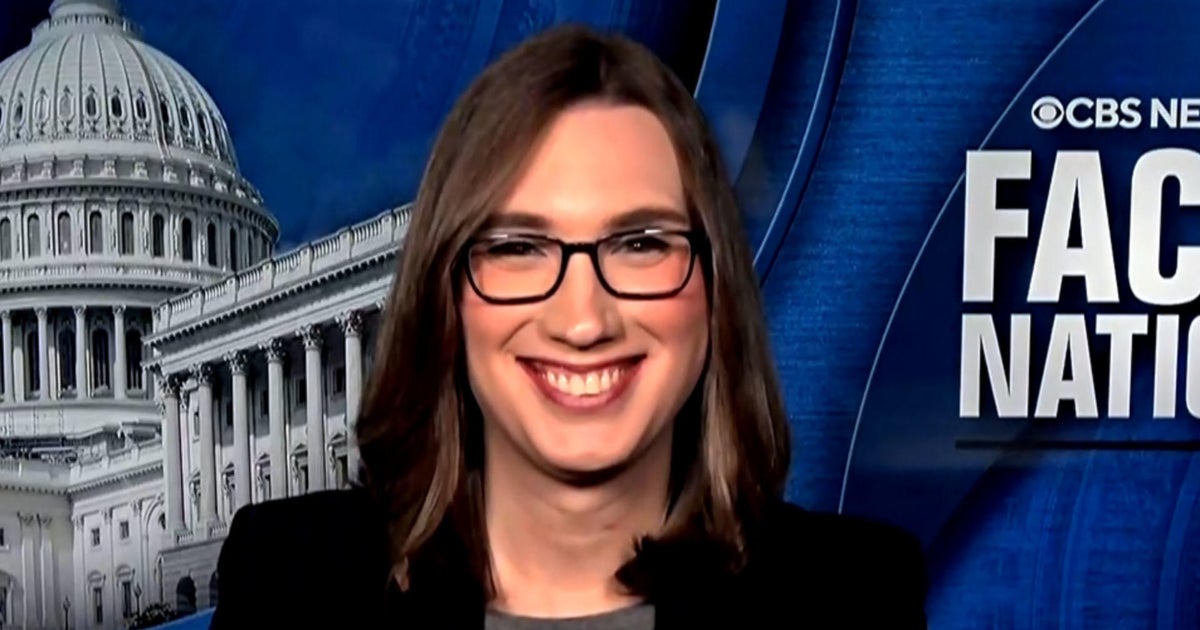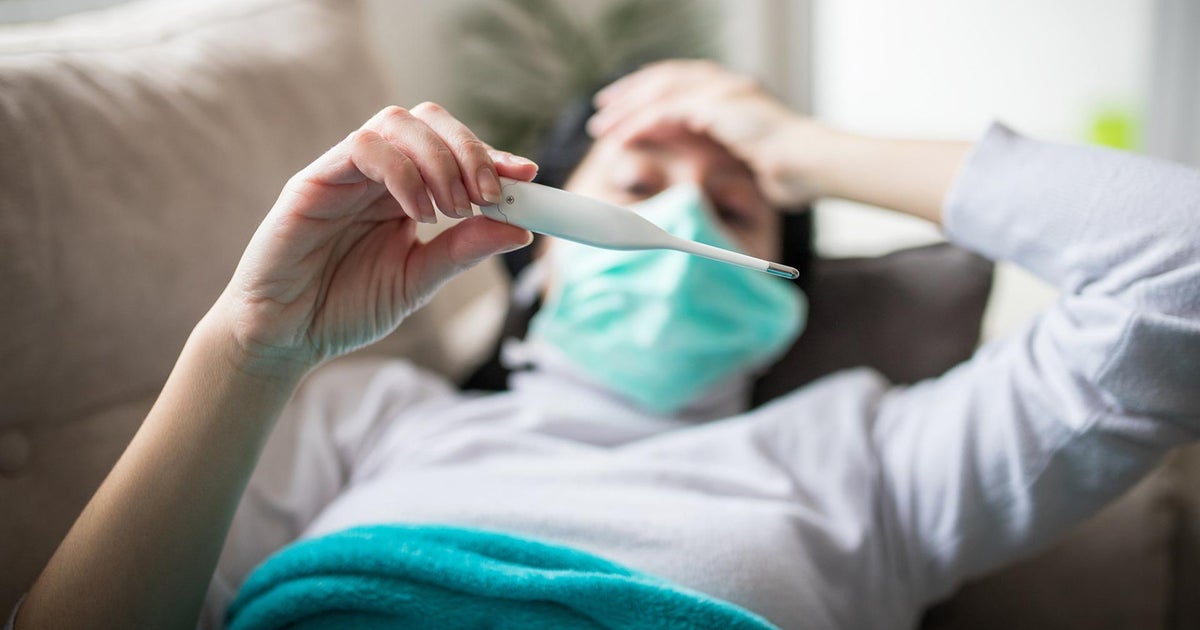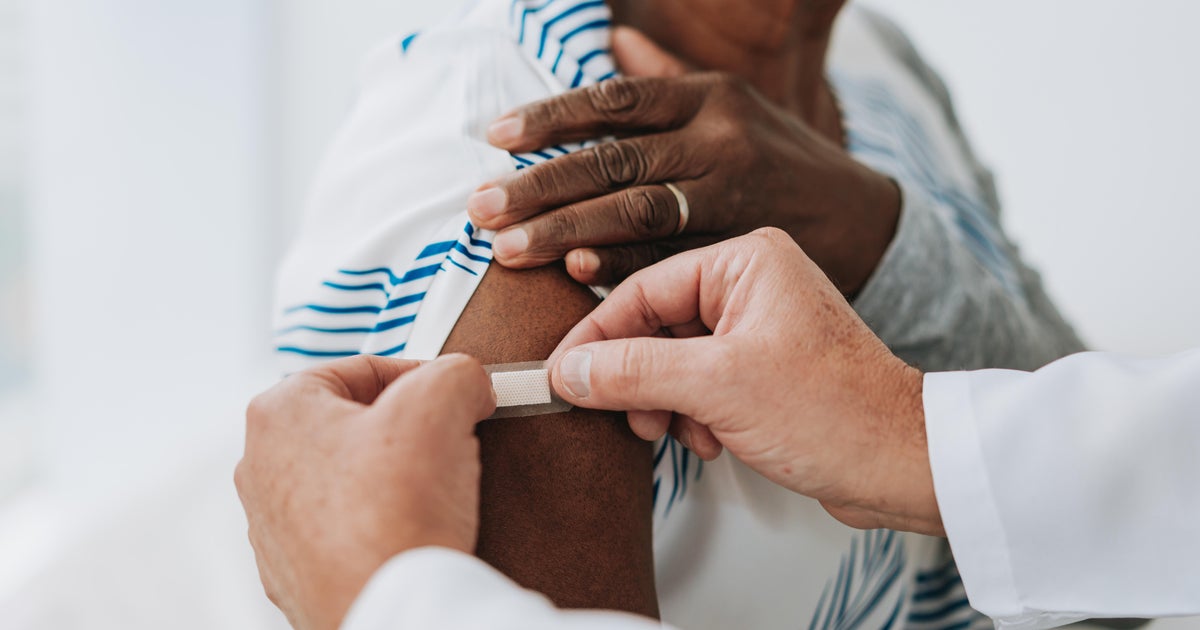CBS News
Indoor air systems crucial to curbing spread of viruses, aerosol researchers say

This is an updated version of a story first published on Oct. 29, 2023. The original video can be viewed here.
With new strains of COVID continuing to appear, and flu season just months away, we thought now is a good time to consider what the pandemic has taught us about preventing the spread of potentially deadly respiratory infections.
It turns out, viruses like the one that causes COVID-19 can travel much farther than six feet. So public health advice focusing on social distancing, handwashing, and masking wasn’t enough. Air quality scientists say, from the start of the pandemic, it also should have focused on improving the air we all breathe … indoors.
As we first reported last fall, some companies are now doing just that – for the health of their workers and the health of their bottom line.
Joe Allen: The original sin of the pandemic was the failure to recognize airborne transmission.
Professor Joe Allen of Harvard’s T.H. Chan School of Public Health believes the rapid spread of COVID in early 2020 was preventable.
Joe Allen: Think about the public health gains we’ve made over the past hundred years. We’ve made improvements to water quality, outdoor air pollution, our food safety, we’ve made improvements to sanitation: absolute basics of public health. Where has indoor air been in that conversation? It’s totally forgotten about. And the pandemic showed what a glaring mistake that was.
60 Minutes
Dr. Jon LaPook: What do you think was lost because of that lag in understanding of how this was spread?
Joe Allen: Tens of thousands of lives in the U.S., many more globally. It’s not an exaggeration.
It’s also no exaggeration to say those early days of COVID were unforgettable. In the U.S. by March 2020, the virus began taking its toll in places like the Life Care Center nursing home in Kirkland, Washington. Sixty miles away in Mount Vernon, Washington, the Skagit Valley Chorale held one of its weekly rehearsals in a church. Half the members stayed away. But the other half showed up. Among them were board members Debbie Amos, Mark and Ruth Backlund, and Coizie Bettinger.
Coizie Bettinger: We just thought hand sanitizer, wash your hands a lot, you know, don’t hug each other, ’cause that’s touch.
None of it was good enough. Within a few days, chorale members began to get sick. In all, COVID hit 53 of the 61 people there that night. Two of them, both in their 80s, died.
Ruth Backlund: We were going, “This– this has got to be spread some other way.” It–
Dr. Jon LaPook: Really?
Ruth Backlund: Because we were good. We were good.
Dr. Jon LaPook: So COVID was percolating and you thought you were doing everything you were supposed to do?
Marck Backlund: Yes.
Debbie Amos: Right.
60 Minutes
Skagit County health officials said the rehearsal “could be considered a superspreading event” – one of the earliest in the country – and concluded that choir members had “an intense and prolonged exposure” to surfaces, droplets and possibly even microscopic airborne particles called “aerosols,” containing the virus. That caught the attention of Linsey Marr, a Virginia Tech university professor specializing in aerosol science, and several of her fellow researchers. Even though the medical community was focused on droplets, surfaces and handwashing, these researchers strongly believed COVID was mostly an airborne disease, but needed more proof. So they launched their own analysis.
Linsey Marr: I thought, “Wow. This is even worse than I thought “This has to be airborne. There’s really no other explanation for it.” Some people are gonna say, “Oh, they all touched the same doorknob.” But, after the first few people touch that doorknob, there’s no more virus left.
Linsey Marr: That’s what happens with our exhaled breath.
Professor Marr used a portable fogger to help explain how so many choir members could have gotten sick.
Linsey Marr: When they’re singing, they are releasing virus particles into the air constantly, probably, like this. And those are going to drift around in the room. Notice they’re not just falling to the ground. And now as we continue to sing, there’s more and more of them in the room. And you can see, as they’re drifting around they’re reaching these other people nearby. And they were there for two and a half hours. And you can imagine that after that amount of time the other people would’ve breathed in enough of them to get sick themselves.
Dr. Jon LaPook: Especially if at night the HVAC system was turned off.
Linsey Marr: As far as we know, it wasn’t running and so there were very – there was very poor ventilation in that room when this was all happening.
An HVAC unit, short for heating, ventilation and air conditioning, is the heart and lungs of any building. The researchers suspected the thermostat most likely shut off the HVAC unit because the chorale members were generating enough heat on their own.
Dr. Jon LaPook: And right now, there’s no ventilation?
Linsey Marr: Very, very low.
Dr. Jon LaPook: OK.
Linsey Marr: And actually, it’s similar to what was in the church where the group was rehearsing.
Then, Professor Marr turned up the circulation to show us how better air flow could have helped remove aerosols and slow the spread of virus.
60 Minutes
Linsey Marr: Instead of just drifting all over the room —
Dr. Jon LaPook: Oh…
Linsey Marr: You can actually see it, right, going up through there–
Dr. Jon LaPook: I sure can. That is dramatic to see that.
The analysis led to one of the most significant papers on the importance of ventilation published during the pandemic. Then, in 2022, a study in Italy went further. It found that by using a school’s fans and air ducts to mechanically exchange indoor air with outdoor air five times an hour, the risk of COVID-19 infections decreased by at least 80 percent. But, in the U.S. it took until May of 2023 for the CDC to recommend an air exchange rate at all.
Joe Allen: If you look at the way we design and operate buildings, and I mean offices, schools, local coffee shop, we haven’t designed for health. We have bare minimum standards. In schools the minimum air change, by design, is about three air changes per hour. Remember, we want at least four to six.
Dr. Jon LaPook: If we’d had these indoor air quality targets before the pandemic, how do you think the pandemic would have unfolded differently?
Joe Allen: We still would have had spread. This isn’t an “end-the-pandemic” thing. We would have had a lot less of it, and we would have a lot less of these superspreading events. Think about the early days of the pandemic, with “flatten the curve”—“stay home.” Why wasn’t “Improve indoor air quality” part of “flatten the curve”? We had tools to protect ourselves. Masking: great tool, it’s a filter. But we ignored the building side of this.
Buildings are Allen’s business. As the founder of Harvard’s Healthy Buildings program, he diagnoses problems in air quality systems and comes up with solutions for clients that include CBS’s parent company, Paramount, and commercial real-estate companies like Beacon Capital Partners, with buildings like this one in downtown Boston. And, he advised Amazon before these new 22-story towers opened last year in Arlington, Virginia, where he gave us a tour.
Dr. Jon LaPook: What does a state-of-the-art building look like in terms of air?
Joe Allen: We see a lot of the elements in this building. You have a dedicated outdoor air system that’s delivering air above the minimum requirements. Then it’s going through two MERV-13 filter banks, and you have highly filtered air.
MERV stands for minimum efficiency reporting value. A rating of 13 means it catches up to 90 percent of airborne particles… depending on their size… as the first line of defense not just against COVID, but other airborne respiratory viruses like flu and RSV.
60 Minutes
Joe Allen: This is the part of the building nobody ever sees. But this determines whether or not you’re healthy or sick in the building, really, what happens in this space.
At Amazon’s new offices, the top floor is a maze of motors, pipes, and air ducts… part of a $2.5 million HVAC system that begins with massive rooftop vents and dampers.
Joe Allen: Right here, this is the whole air handling system. This is where the air comes into the building, it’s filtered, it’s cooled, and then delivered. This determines how much air actually reaches the office space where people are working, and how clean that air is.
Downstairs, each floor has a sensor that tells building engineers about the quality of the indoor air … such as levels of carbon dioxide, known as CO2.
Dr. Jon LaPook: We breathe out the carbon dioxide.
Joe Allen: That’s right
Dr. Jon LaPook: The less carbon dioxide, the better the ventilation?
Joe Allen: Really straightforward. High carbon dioxide means you’re not getting enough outdoor air from that system we just looked at. If it’s low, you’re in good shape. Then we also measure particles. That tells us things about, like, outdoor air pollution.
The entire system can be monitored and controlled from the basement.
Joe Allen: Remember we talked about carbon dioxide is an indicator for ventilation? Well, I can see in this building all of these are under 800 parts per million.
Dr. Jon LaPook: So that’s good?
Joe Allen: That’s great. And really important: if a lot of people went into a space, the CO2 level would rise, this system would recognize it. The dampers would open up and bring in a lot more outdoor air.
Katie Hughes, Amazon’s director of health and safety, pointed to the waves of wildfire smoke that have swept down from Canada as the ultimate test of the indoor air quality system.
Dr. Jon LaPook: Not too long ago, Washington and Virginia were sort of smothered by this smoke coming down from Canada. What happened in this building?
Katie Hughes: You would expect the air quality within the facility to not be great. Our buildings were performing very well.
Amazon says it has updated and continues to monitor its HVAC systems…including in its warehouses.
A recent survey of facility managers in the U.S. and Canada found that since March 2020, roughly two-thirds of respondents have upgraded their MERV filters and increased their air exchange rates. In New York City, JPMorgan Chase says its new headquarters will have state of the art air quality controls. And this new skyscraper called 1 Vanderbilt already runs a modern HVAC system.
Katie Hughes: COVID shifted everybody’s mindset in terms of air quality in terms of communicable or infectious diseases.
Dr. Jon LaPook: Are you finding that Amazon is making a business decision partially by saying, “Look, it’s okay for you to come back to work, because we’re telling you that the air inside this building is safe”?
Katie Hughes: I think it’s one of many reasons why we expect or would like people back in the office. That is– a good thing to have, it’s probably one of many things.
A well-operating HVAC system is not only good for the health of employees. It can be good for the health of companies, too, especially with people working remotely, leaving many commercial building owners looking for tenants.
Dr. Jon LaPook: There’s empty office space, in New York City and elsewhere. How do you think this new thinking might affect that in terms of people even wanting to come to work?
Joe Allen: The dynamic has changed: It’s a total buyers’ or tenants’ market. All else equal, which building are you gonna go to? You have your choice right now: This building that put in healthy building controls, or this building that’s designed the way we’ve always designed buildings, and is prone to being a sick building?
Dr. Jon LaPook: So it actually can help the bottom line in addition to, of course, improving health?
Joe Allen: Yeah.
Dr. Jon LaPook: What about retrofitting a building that’s old?
Joe Allen: I think it’s a misconception that old buildings can’t be healthy buildings. Some of these fixes don’t take much. Improving the level of filtration? That’s easy; it’s cheap; protects against COVID-19; influenza; also protects against wildfire smoke and outdoor air pollution; protects against allergens. Simple, absolute basic things that can be done.
60 Minutes
The Skagit Valley Chorale rehearsals are now in a different church with a new HVAC system. For the last year, doors were left open to let in fresh air, regardless of the season, and there are even portable carbon dioxide monitors to track ventilation.
Debbie Amos: We’ve been through a traumatic experience. And we’ve tried to learn from that. And did help the science with the aerosol study. And now, we’re moving on in a way that we can still sing– but in a more safe manner.
Dr. Jon LaPook: Do you worry that when the spotlight of the pandemic starts to fade, that people will forget and that they won’t act the way they should, in terms of buildings?
Joe Allen: I’m a bit more optimistic than that. I think there are fundamental shifts that have happened. The scientific and medical literature’s being rewritten. The government and standard setting bodies are setting new health-based standards. Businesses are responding and won’t forget what this meant to their employees’ health, and their business. So I don’t think we’re gonna forget these lessons. We better not.
Produced by Andrew Wolff. Associate producer, Tadd J. Lascari. Broadcast associate, Eliza Costas. Edited by Matt Richman.
CBS News
Sen. Van Hollen says Biden is “not fully complying with American law” on Israeli arms shipments

Watch CBS News
Be the first to know
Get browser notifications for breaking news, live events, and exclusive reporting.
CBS News
Rep.-elect Sarah McBride says “I didn’t run” for Congrees “to talk about what bathroom I use”

Watch CBS News
Be the first to know
Get browser notifications for breaking news, live events, and exclusive reporting.
CBS News
11/24: Face the Nation – CBS News

Watch CBS News
Be the first to know
Get browser notifications for breaking news, live events, and exclusive reporting.













